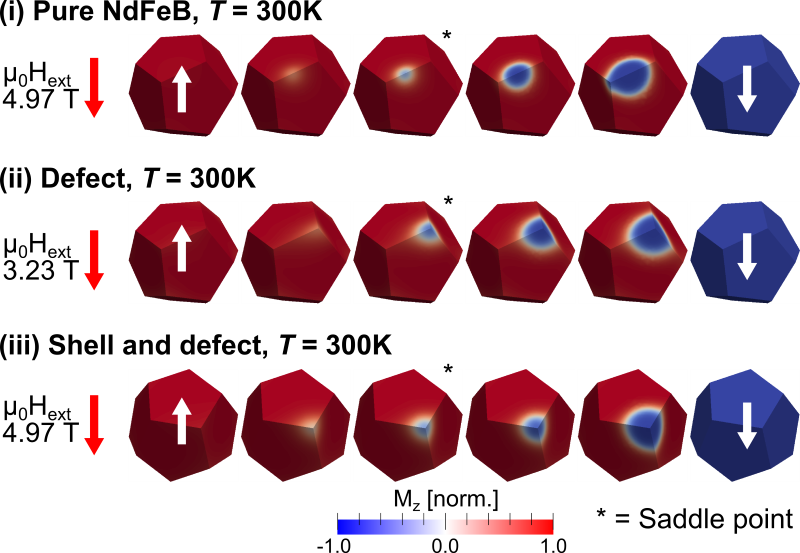Our new paper titled “Thermally-activated coercivity in core-shell permanent magnets” has been accepted for publication in Journal of Applied Physics. Click here to download the paper as a PDF file.
In the paper we describe recent micromagnetics simulations on NdFeB grains that have undergone a dysprosium (Dy) grain boundary diffusion process (GBDP). The super hard (Dy,Nd)FeB shell that is formed during this process stabilizes the grains against thermal fluctuations that can be detrimental to the coercivity of the magnet in high-temperature situations. NdFeB permanent magnets are usually doped with Dy to increase their performance at high temperatures but the GBDP allows us to target the Dy at the most important locations i.e. the grain surface, thus reducing the overall required amount of Dy, which is expensive and in short supply.
Such magnets are critical components of wind turbines, electric/hybrid vehicles, marine propulsion and manufacturing machinery. By working to improve the performance of permanent magnets we can make such machines lighter and more energy efficient.
 Figure: Simulations of the reversal process in NdFeB grains with (i) a pure NdFeB grain, (ii) a NdFeB grain with a soft outer defect and (iii) NdFeB core, (Dy, Nd)FeB shell and an outer soft defect. Thermally-activated coercive field values are indicated with the field direction (red arrows). The saddle point image is the configuration with the highest total energy, forming the peak of the energy barrier.
Figure: Simulations of the reversal process in NdFeB grains with (i) a pure NdFeB grain, (ii) a NdFeB grain with a soft outer defect and (iii) NdFeB core, (Dy, Nd)FeB shell and an outer soft defect. Thermally-activated coercive field values are indicated with the field direction (red arrows). The saddle point image is the configuration with the highest total energy, forming the peak of the energy barrier.